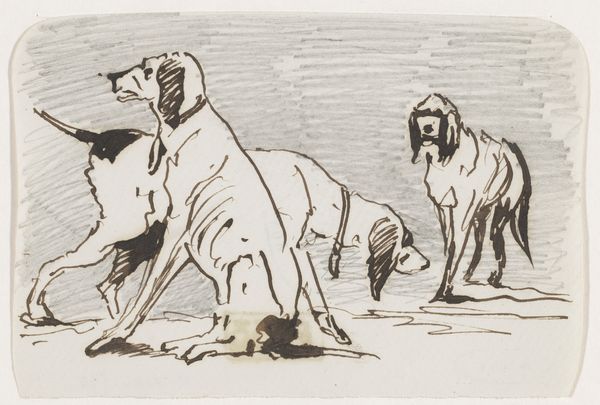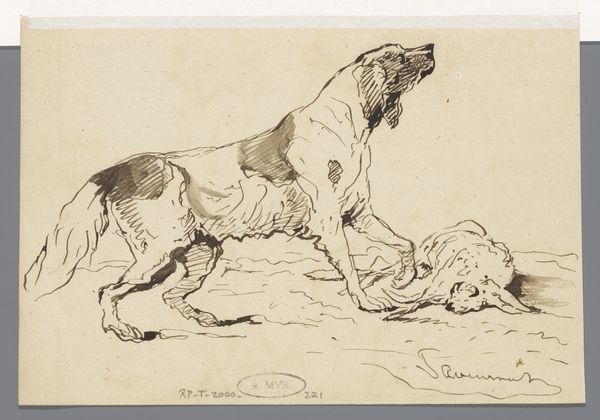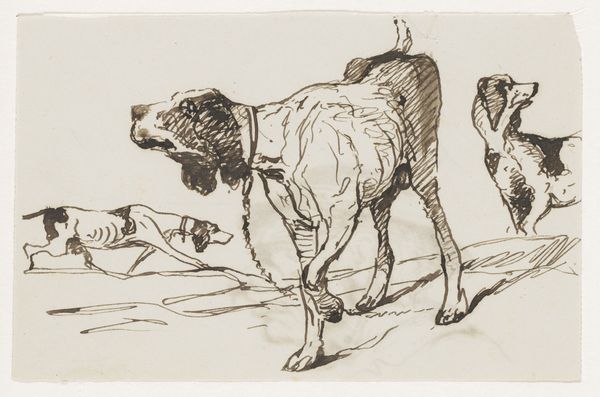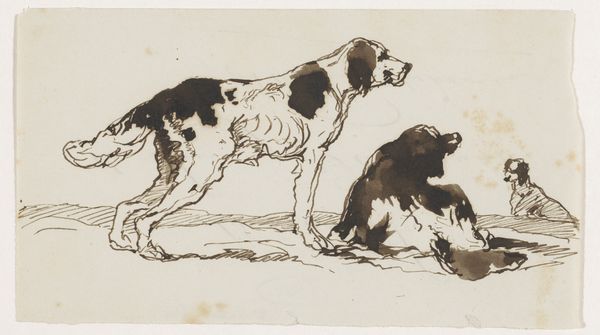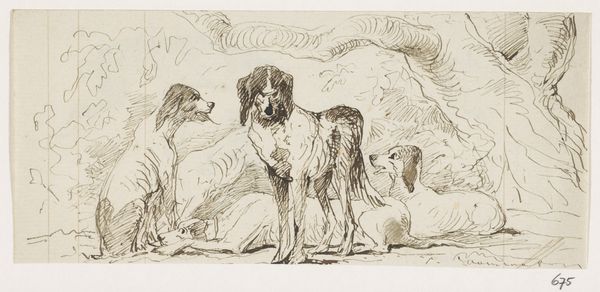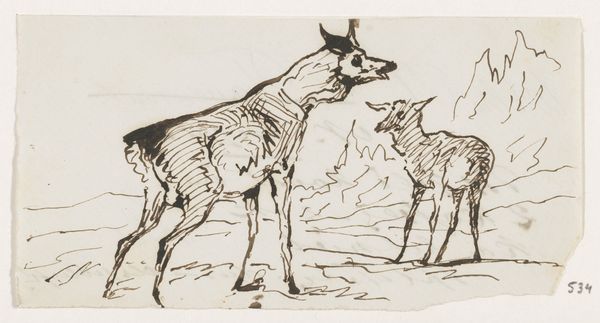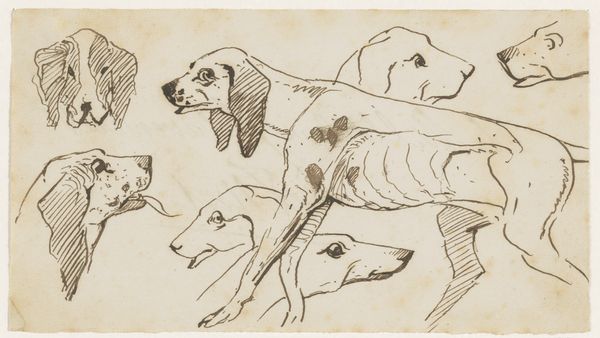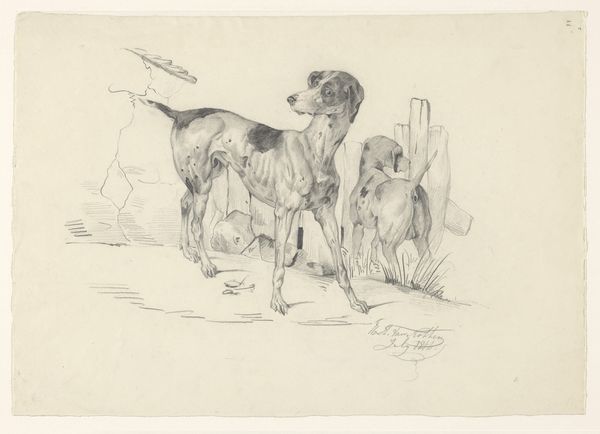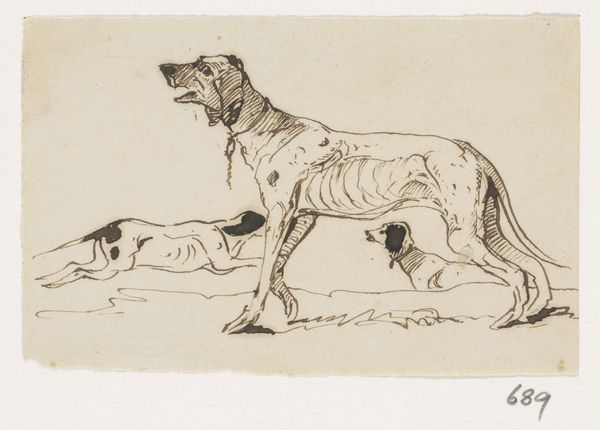
drawing, ink
#
drawing
#
ink drawing
#
animal
#
dog
#
ink
#
line
#
genre-painting
#
realism
Dimensions: height 112 mm, width 117 mm
Copyright: Rijks Museum: Open Domain
Editor: Here we have "Two Dogs," an ink drawing by Johannes Tavenraat, created sometime between 1840 and 1880. It feels incredibly spontaneous, almost like a sketch. What do you see in the lines and composition of this piece? Curator: I see a deliberate exploration of line and form, though rendered with an economy of means. The dynamism of the active dog, poised and alert, contrasts starkly with the stillness of the seated one. Note the skillful use of varied line weight – thicker, more confident strokes define the contours, while delicate hatching suggests shadow and volume. Editor: So, the artist is primarily focused on the visual elements themselves, like the contrast and the lines? Curator: Precisely. Consider how Tavenraat employs negative space. It's not merely background; it actively shapes the figures. Ask yourself, what would change if those sparse details indicating the ground plane were removed? Does the drawing become more or less effective? Editor: I think without that ground, they'd float and lose that sense of immediate observation, almost like he captured a fleeting moment. Curator: An astute observation. Also, how does the placement of the ink blots, seemingly accidental, influence the overall composition? Do they add to the sense of spontaneity or disrupt the formal balance? Editor: I hadn't considered those blots, but they almost anchor the dogs on the page, pulling the eye back into the image. It’s a very simple drawing, but there’s a lot going on in its structure. Thank you. Curator: Indeed, simplicity can often belie a rigorous artistic intelligence at play. Reflecting on the intrinsic elements is critical for decoding art.
Comments
No comments
Be the first to comment and join the conversation on the ultimate creative platform.
